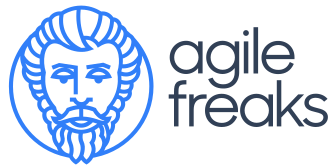Business / 25.11.2024

08.09.2025 Petru Teodorescu
This case study delves into the complexities and successes of building and maintaining large-scale Drupal platforms for international organizations. It highlights various aspects of Drupal site development, including multilingual capabilities, custom module creation, content workflows, and advanced theming, while showcasing the management of third-party integrations, hosting environments, and security best practices.
.............................................................................
NEED EXPERT HELP? Contact us
.............................................................................
Multilingual Site Development
For global organizations, delivering content in multiple languages is a necessity to reach diverse audiences. Using Drupal's built-in multilingual features, websites were developed to support seamless translation and dynamic language switching. This ensured that users from different regions had access to localized content, improving both user experience and engagement. The implementation involved integrating Drupal's language modules and setting up translation workflows that catered to region-specific content needs.
Complex Content Management
Managing vast amounts of content for international platforms required a sophisticated content management system. With Drupal’s flexible taxonomy and content type capabilities, a robust structure was designed to handle large-scale content. This enabled the organization of complex information, ensuring that users could easily navigate and access relevant content. Drupal’s taxonomy features were crucial in categorizing content, making it accessible to both administrators and end users.
Custom Module Development
Some projects required highly tailored functionality that couldn’t be addressed by out-of-the-box solutions. In these instances, custom Drupal modules were developed to meet specific project requirements. One example involved building interactive tools that enhanced user engagement. Custom modules also streamlined backend operations, such as data collection and reporting, by extending Drupal’s webform capabilities with custom elements, handlers, and validations. Additionally, a scoring mechanism based on user input from webforms was created to provide dynamic assessments.
Content Workflows and SSO Integration
A custom content publication workflow was developed to ensure efficient content management, integrating with OAuth2 and OpenID Connect for secure Single Sign-On (SSO). This setup allowed users to authenticate seamlessly across various platforms while maintaining secure access. The workflow streamlined the process from content creation to publication, improving both security and productivity for content administrators.
Third-Party Integrations
Numerous projects required integration with third-party services and APIs to extend Drupal’s functionality. Examples include:
- Salesforce CRM Integration: Ensuring data synchronization between Salesforce and Drupal, providing a consistent user experience.
- Monitoring Tools: Integrating services like Sentry and Datadog to monitor system performance and alert teams to potential issues.
- Payment Gateways: Handling server-to-server payment notifications for secure transactions.
- Kafka Integration: Enabling communication with other microservices via Kafka consumers and publishers.
- Tableau Dashboards: Displaying data-driven dashboards within Drupal for enhanced reporting, with access controlled by permission settings.
Advanced Theming and Responsive Design
Drupal’s theming capabilities were utilized to develop fully responsive, mobile-first websites. These custom themes were designed based on prototypes from Figma and were implemented using modern front-end techniques to ensure a smooth user experience across all devices. This focus on responsive design ensured that users had a consistent experience, whether accessing the site from a desktop, tablet, or smartphone.
Drupal Security Practices
Security is paramount when developing for international organizations. Drupal security best practices were followed rigorously, including frequent updates, module security reviews, and the implementation of secure authentication methods. This ensured that sensitive data was protected and that the platforms adhered to strict security standards, crucial for maintaining user trust.
Performance Optimization
Performance was a key focus, particularly for content-heavy sites. Various performance optimization techniques were applied, including server-side caching (e.g., Varnish), CDN integration, and database tuning. By leveraging caching mechanisms and content delivery networks, the sites achieved faster load times, providing a smoother experience for users. Additional optimization involved integrating AWS services like CloudFront and EC2 to create a scalable infrastructure.
Drupal Migration and Upgrades
Handling Drupal migrations and upgrades is critical for keeping systems up to date and secure. In several cases, Drupal sites were upgraded to newer versions or migrated from legacy systems. This process involved careful planning and execution to minimize downtime and data loss. Custom scripts were often developed to migrate content while maintaining the site’s integrity, ensuring a seamless transition between versions.
Hosting and Infrastructure
Drupal platforms were hosted on cloud services like AWS and Hetzner, utilizing their extensive features for scalability, security, and performance. Custom Docker images were used to ensure a consistent development environment, while automated deployment pipelines were set up using GitHub Actions to streamline the process from code development to production deployment. For larger-scale projects, server-side optimizations like load balancing and CDN integration were applied to handle traffic spikes and improve reliability.
Collaborative Development
Many projects were delivered in collaboration with international teams, requiring coordination across multiple time zones. Efficient communication and project management were key to ensuring that global stakeholders were aligned. Complex user role and permission systems were implemented within Drupal to manage access levels and maintain secure content workflows.
Conclusion
This case study illustrates the depth of expertise involved in managing Drupal projects for international organizations. The focus on multilingual development, custom functionality, security, and performance optimization highlights the flexibility and power of Drupal as a content management platform. By integrating third-party services and building scalable, secure infrastructures, these Drupal projects successfully met the needs of diverse, global audiences.




